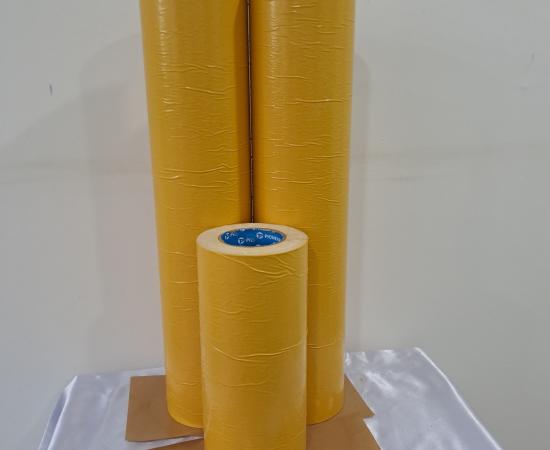Features and Benefits
1. Strong Adhesion:
Double-sided cloth tape offers high-tack adhesion on both sides, ensuring a strong bond between surfaces, even on uneven or rough textures.
2. Durability:
The cloth backing provides exceptional durability and resistance to wear and tear, making it suitable for heavy-duty applications.
3. Flexibility:
The tape is flexible and conforms easily to irregular surfaces, making it versatile for a wide range of applications.
4. Easy to Tear:
Despite its strength, double-sided cloth tape can be easily torn by hand, eliminating the need for scissors or cutting tools.
5. Temperature Resistance:
This tape is designed to withstand a wide range of temperatures, making it suitable for both indoor and outdoor use.
6. Residue-Free Removal:
When removed, the tape leaves minimal or no adhesive residue, making it ideal for temporary applications.
7. Moisture and Humidity Resistant:
It performs well in moist or humid environments, ensuring a strong bond even in challenging conditions.
Applications
1. Carpet Installation:
Double-sided cloth tape is commonly used for securing carpets and rugs in place, preventing movement and ensuring a secure fit.
2. Mounting and Positioning:
Ideal for mounting items like posters, signs, or lightweight fixtures, it provides a secure hold without the need for nails or screws.
3. Trade Shows and Events:
Perfect for temporary setups, this tape can hold banners, displays, and carpets in place, ensuring a clean and professional appearance.
4. Construction and Remodeling:
In construction, it is used for splicing materials, securing underlays, and holding materials together during assembly.
5. Automotive Industry:
It is used in the automotive industry for securing interior panels, trims, and other components that require a strong yet removable bond.
6. Packaging and Bundling:
Double-sided cloth tape is useful for securing items during packaging and bundling, especially when traditional tape doesn’t provide the needed strength.
7. Sound and Vibration Dampening:
The tape’s thickness and flexibility make it effective for soundproofing and reducing vibrations in various applications, including electronics and machinery.
Best Practices for Use
1. Surface Preparation:
Ensure that the surfaces you are bonding are clean, dry, and free from dust, oil, and other contaminants. This will maximize the adhesive strength of the tape.
2. Apply Pressure:
After placing the tape, apply firm and even pressure across the tape's surface to ensure a strong bond. Use a roller or your hand to press down on the tape.
3. Test Before Full Application:
For sensitive surfaces, test a small piece of tape in an inconspicuous area to ensure that it adheres well and can be removed without damage.
4. Allow Time for Bonding:
For the best results, allow the tape to bond with the surface for a few minutes before applying the second surface. This ensures a stronger connection.
5. Store Properly:
Keep the tape in a cool, dry place, away from direct sunlight, to maintain its adhesive properties and longevity.
Tips for Specific Applications
1. Carpet Installation:
When using double-sided cloth tape for carpet installation, apply the tape along the perimeter of the area and across the middle in a crisscross pattern. This ensures that the carpet remains firmly in place.
2. Trade Shows and Events:
For temporary setups, ensure that the tape is applied evenly and securely. When removing, pull the tape slowly and at a sharp angle to avoid leaving any residue on surfaces.
3. Automotive Applications:
In automotive uses, make sure the surfaces are completely clean and dry before applying the tape. For heavier components, consider using multiple strips of tape for added security.
4. Mounting and Positioning:
When mounting objects, ensure that the entire surface of the tape is in contact with the item and the wall or surface. For heavier objects, use multiple strips or combine with other mounting solutions.
5. Soundproofing:
When using the tape for soundproofing, apply it in layers or alongside other sound-dampening materials to maximize its effectiveness.
call us: +91 9822619307 Follow us:

